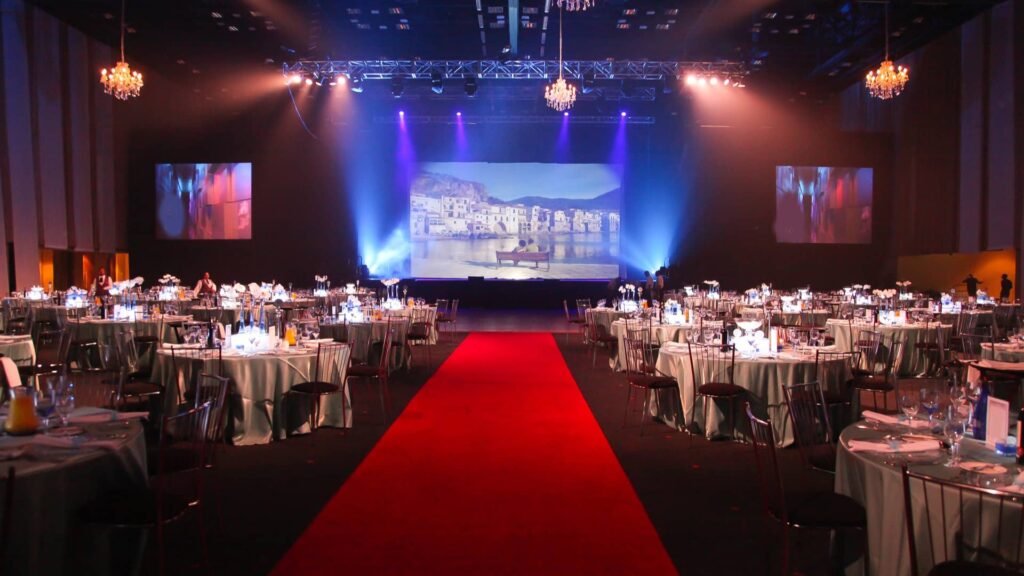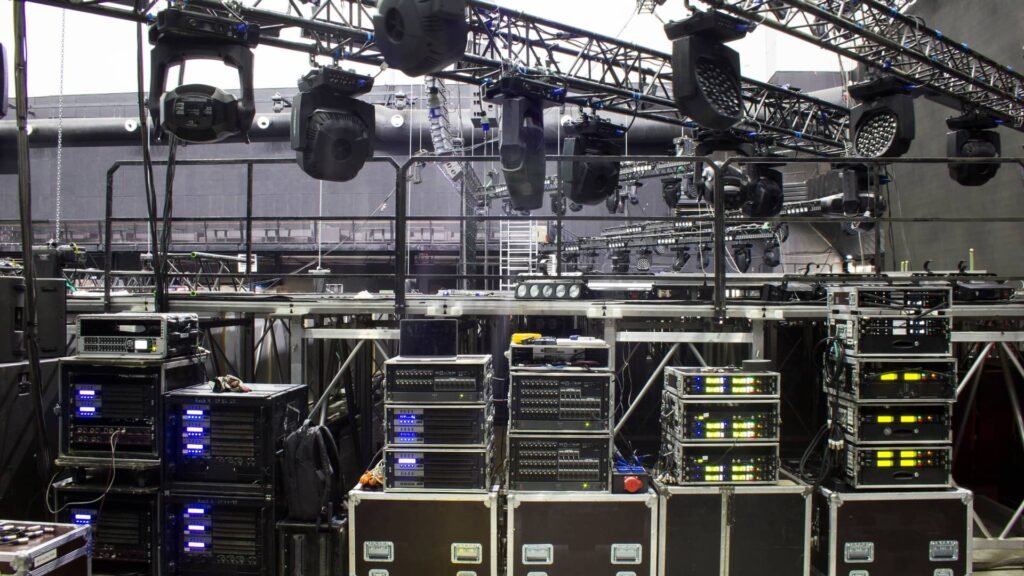Is stage lighting rental important? Stage lighting is the craft of lighting as it applies to the production of opera, theater, dance, and other performance arts. In stage lighting designs, several different types of lights are used, including spotlights, floods, scrolling lights, and washes. The goal of stage lighting is to create a compelling and appealing visual environment for the performers while also supporting the overall tone and mood of the production. In order to achieve this, lighting designers must carefully consider each light’s placement, color, and intensity. Stage lighting is a critical element of any performance, and a skilled designer can make all the difference between a good show and a great one.
Functions Of Stage Lighting
Mood: Stage lighting holds the ability to instantly change the mood of a crowd. For example, turning down the lights will cause the crowd to settle and slow down while cranking up the bright lights will undoubtedly pump up a crowd.
RELATED: Reasons To Rent A Portable Stage For Your Next Event

Composition: If your event is a play, lighting is important as it will ensure that background props and actors in a scene are still visible to the audience.
Natural Setting: To make a play set look as natural as possible, stage lights are well utilized. A variety of lights give the audience an illusion of daylight or a dimly lit room.
Direction And Visibility: Stage lighting directs the audience to where they should be looking and holds their attention. Lighting also ensures the audience enjoys excellent visibility.
DUANE Stage Rental
Types Of Stage Lighting Fixtures
A stage lighting fixture is an assembly of lamps and other optical, mechanical, and electrical components designed to direct, focus, or shape the light output of lamps. So, when selecting stage lighting fixtures, there are a few different factors to consider, such as beam angle, beam spread, color temperature, wattage, and more. The most common types of stage lighting fixtures are PAR lights, fresnels, ellipsoidal, moving lights, and LED lights. PAR lights are often used for general illumination or as accent lights.
Fresnel fixtures produce a wide range of beam angles with a soft edge. This makes them ideal for washing an entire stage with light. Ellipsoidal fixtures are versatile and are used for both straight-on lighting and lighting at extreme angles. Moving lights add motion and interest to a performance, and LED lights are becoming increasingly popular due to their energy efficiency and long lifespan. No matter what type of fixture you choose, carefully considering your needs will ensure that your stage lighting is effective and looks great.
Where To Place Stage Light Fixtures
When it comes to stage lighting, there are a few things to keep in mind. First, you need to consider the purpose of the lighting. For example, is it meant to highlight a particular element on stage or provide general illumination? Once you’ve determined the purpose of the lighting, you can then begin to think about where to place the fixtures.
If you’re looking to highlight a specific area, placing the fixture above and behind the object or person you wish to highlight is often best. This will create a nice backlit effect that will really make the element stand out. On the other hand, if you’re trying to provide general illumination, you’ll want to place your fixtures around the perimeter of the stage. This will ensure that there are no dark spots on stage and that everyone is evenly lit.
Stage Lighting Colors And Textures
Stage lighting is an important aspect of any theatrical performance. Lights create a variety of moods and atmospheres, from the eerie glow of a ghost story to the dazzling explosion of a musical finale. In addition, colors and textures play a vital role in setting the scene and adding depth to the production. For example, a warm orange light might suggest sunset, while a cold blue light could represent moonlight.
Texture is also important, with rough surfaces creating sharp shadows while smooth surfaces reflect more light. By carefully controlling the colors and textures of the light, stage lighting can vastly improve the impact of a performance.
Custom Stage Lighting Design
The right lighting design can mean the difference between a good production and a performance that the audience will remember for the rest of their lives. Yes, stage lighting is a critical component of any performance art production. Our consultants will help guide you through setting the right angles, levels, colors, and textures. The light you ultimately create with our stage lighting rental will enhance the concert, musical, dance, or play that you are presenting. We will meet with your team for an in-depth consultation to discuss your production goals to ensure your performance is memorable.
NEXT: Tips To Ensure Your Office Holiday Party Is A Wild Success








